After discussing the various types of patent search that inventors and organizations can leverage to make decision-making in the IP industry less puzzling, let’s continue our Patent 101 series by focusing on one key element: prior art. In particular, we are going to talk about Second-Degree Prior Art, a concept introduced by InQuartik’s engineers to empower professionals with higher opportunities to uncover valuable data during their patent searches.
Prior art is one of the foundations of the entire patent system: from prosecution to infringement, it is one of the elements that can make a difference between the patent being granted or rejected, as well as it surviving or not an invalidation trial.
It is of such importance that it is literally the starting point of every invention’s journey: as we saw before, during the novelty or patentability search the patent office examiner compares the invention at issue with the prior art to assess its novelty and non-obviousness.
Prior art and citations: the pillars of patent search
The United States Code defines prior art in Section 102—Conditions for Patentability; Novelty of Title 35:
A person shall be entitled to a patent unless (1) the claimed invention was patented, described in a printed publication, or in public use, on sale, or otherwise available to the public before the effective filing date of the claimed invention […]
To put it simply, any “evidence” that the subject of the patent application was already publicly known or available—in whole or in part—before the effective filing date.

The definition makes it clear that the range of references that can fall into prior art goes well beyond granted patents and products available on the marketplace.
As a rule of thumb, prior art arises when an individual has either made an idea available to the public or filed a patent application that was eventually published or issued as a patent.
How the disclosure took place (size of the audience, language used, or geographic location) is irrelevant, as irrelevant is the publishing date of the patent application potentially qualifying as prior art.
In fact, a previously-filed application can be deemed as prior art even if disclosed after the filing date of the application at issue.
When it comes to applying the theory to patent search, prior art translates into backward citations, defined as the earlier published documents cited by the inventor or the examiner:
- those included by the examiner have the purpose of restricting the claims;
- those included by the inventor have the purpose to demonstrate the inventive steps.
Forward citations are published documents that cite the document at issue. They are particularly useful for patent strategy purposes, as they allow to identify new competitors entering the market and, consequently, potential targets for infringement lawsuits or licensing.
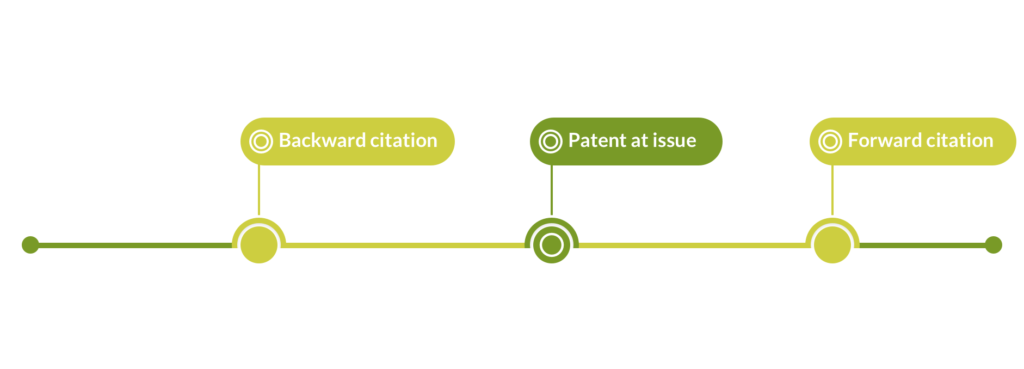
Second-Degree Prior Art: why?
With the steadily increasing number of patent applications that each year land on patent offices’ desks worldwide, assessing novelty or validity has become a daunting task.
The risk of relevant references slipping through is nowadays dangerously tangible.
As a solution to this issue, our engineers introduced a safety net by including an additional layer of patent documents for the searcher to evaluate: the Second-Degree Prior Art.
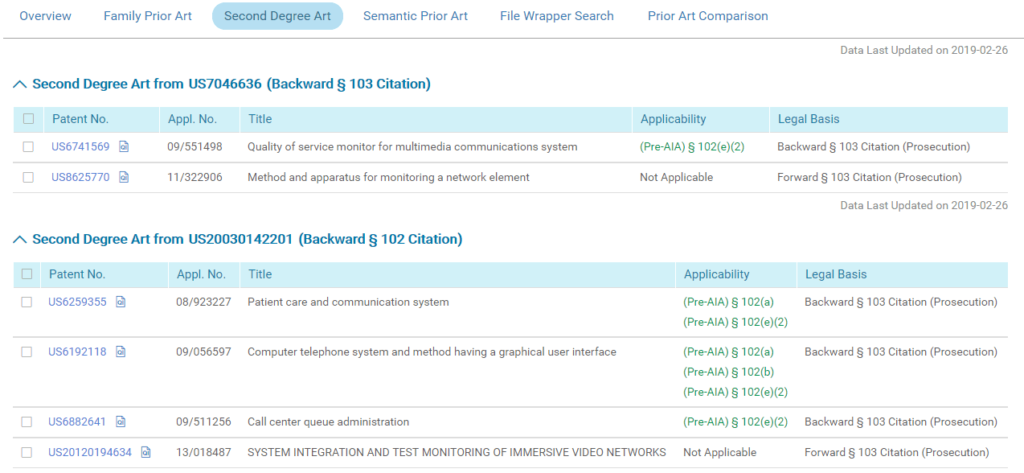
This tab comprises documents that are somehow linked to the existing “first-degree” prior art: by relating—even indirectly—with the invention at issue, these additional references might disclose similar technology and, thus, should be taken into consideration.
Second-Degree Prior Art: how?
By applying the backward/forward citations notion mentioned above, we can classify Second-Degree Prior Art into:
1. Backward citations of backward citations—patent documents that are cited (backward citation) by the prior art of the document at issue (backward citation), or simply put the prior art of the “first-degree” prior art itself:
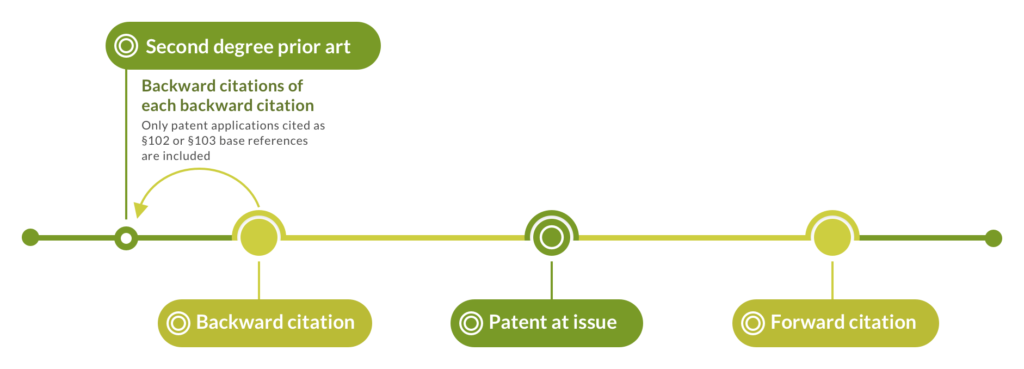
2. Forward citations of backward citations—patent documents that cite (forward citation) references found in the prior art of the document at issue (backward citation) or, in other words, patent documents that share prior art with the document at issue:
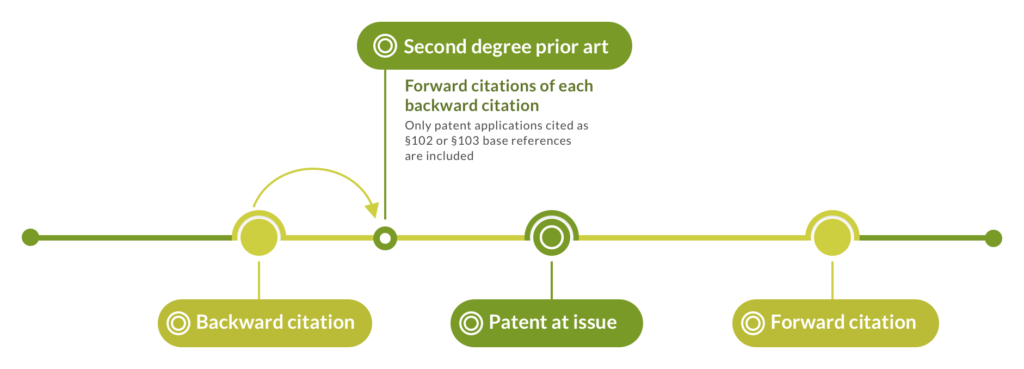
3. Backward citations of forward citations—patent documents that are cited (backward citation) by patents that have the document at issue as prior art (backward citation):
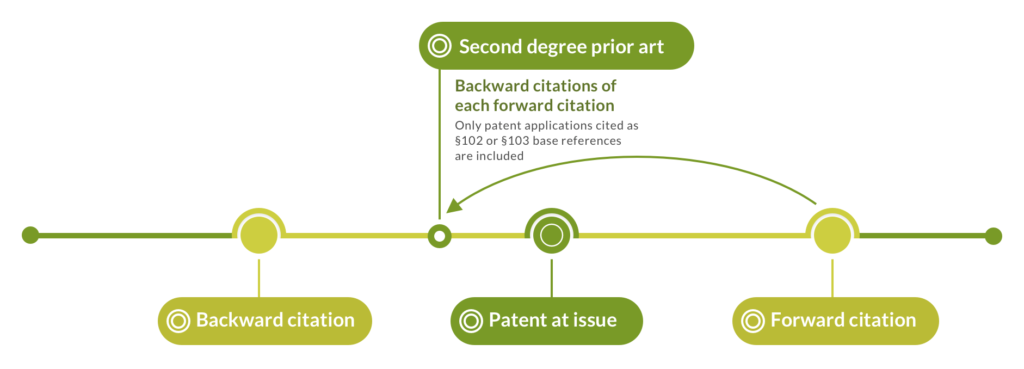
It should be noted that all these patent documents, in order to qualify as Second-Degree Prior Art, must have been made public (in any of the forms discussed above) before the effective filing date of the document at issue.
These additional prior art references are based solely on Section 102 and Section 103 US references found in the prosecution history and post-grant proceedings available in Quality Insights, which mainly includes prior art of patents granted after the year 2000.
Second-Degree Prior Art: when?
In the case of patentability, broadening the prior art horizon enables inventors and organizations to craft better claims and design around more efficiently.
Ultimately, Second-Degree Prior Art is going to lower down the chances of having the application rejected because of some obscure patent uncovered by the examiner.
On the other hand, a higher number of possible prior art references gives the plaintiff a stronger position in infringement trials.
Together with Semantic Prior Art—which we are going to cover in the future installments of the series—Second-Degree Prior Art can save professionals plenty of resources by cutting down the time required to perform patent searches.
Level up your prior art search today with a 7-day free trial of Quality Insights


